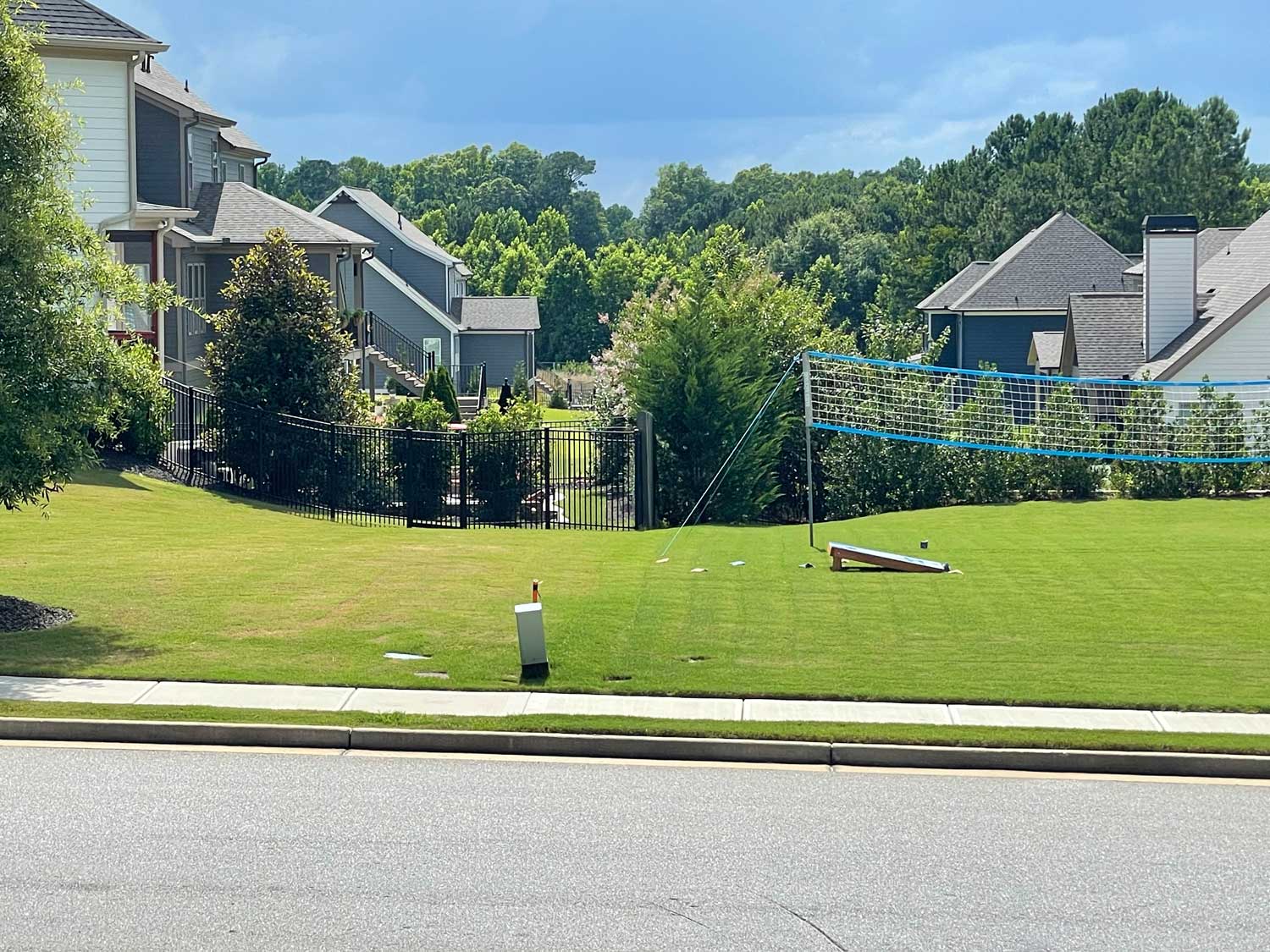You may be wondering why you have weeds in your treated lawn. If your turf professional is regularly onsite, making applications, then relative cleanliness is a reasonable expectation, right? However, it’s not quite that simple. In the paragraphs below, we will take a quick look at a few reasons you may see weeds in a treated lawn and how we can help.
The Long Game of Weed Treatment
Pre-emergents may be a term you’re unfamiliar with, but these are treatments we apply at strategic times to stifle the development of seasonal weeds. If these rounds weren’t applied, treating existing weeds during fertilization rounds and weed control would be the best option until our next round of pre-emergents. If you see weeds in your lawn, stick with us. This is a process – one that we’re confident in when partnered with key cultural practices.
In turf, cultural practices are defined as the functions key to encouraging turf health. These include tasks you’ve entrusted to us, such as fertilization, pre-emergent weed control, post-emergent weed control, and hopefully aerification, among other services. They also include actions like mowing and irrigation cared for by the property owner or another trusted partner:
Mowing to Prevent Weeds in Your Lawn
Proper mowing is essential to turf health and the reduction of weed pressure. Mowing weekly reduces the incidence of damage created by removing too much material (also known as scalping). This also encourages density – which is important for beauty, shading, and competing with weeds that may infiltrate. The sharpness of your blade is also important, as sharp blades cut, and dull blades bludgeon or rip.
Proper irrigation techniques are important for turf health, pre-emergent utility, duration, and weed suppression. One inch of water per week during active growth applied deeply across 2-3 non-contiguous days is ideal for weed prevention. This also takes care of moving the applied pre-emergents into your soil where they are active and keeps them in a solution where they are functional.
Insufficient water may result in drought stress and decreased density, allowing weeds a competitive opportunity. It will also reduce the effect of the pre-emergent by drying the solution. Too much water can also cause thinness and move pre-emergents out of the zone they’re most effective. Some weeds, like nutsedges, kyllingas, doveweed, and Virginia buttonweed, also prefer greater soil moisture. (Please note that rainfall must be considered in watering amounts as well.)
Microclimates and Your Lawn
Within a given climate, conditions can vary greatly, even in portions of the same yard. For instance, sun exposure may be optimal in the front yard but insufficient between the north side of the house and a close fence. Soil conditions and irrigation coverage may be ideal in one portion of the yard but compromised in other areas. Other factors that influence this include traffic, pets, heat, photodegradation, and competition with other plants in the landscape.
Conclusion: No Two Lawns Are The Same
No two lawns are identical, even when a property line is shared. Comparing them is difficult and not always ‘apples to apples.’ At Nature’s Turf, we are up to the challenge of treating weeds in your lawn. We have processes meant to encourage turf health, help prevent and control weeds, and a team of helpful professionals eager to help sort challenges and triumphs unique to your property.








